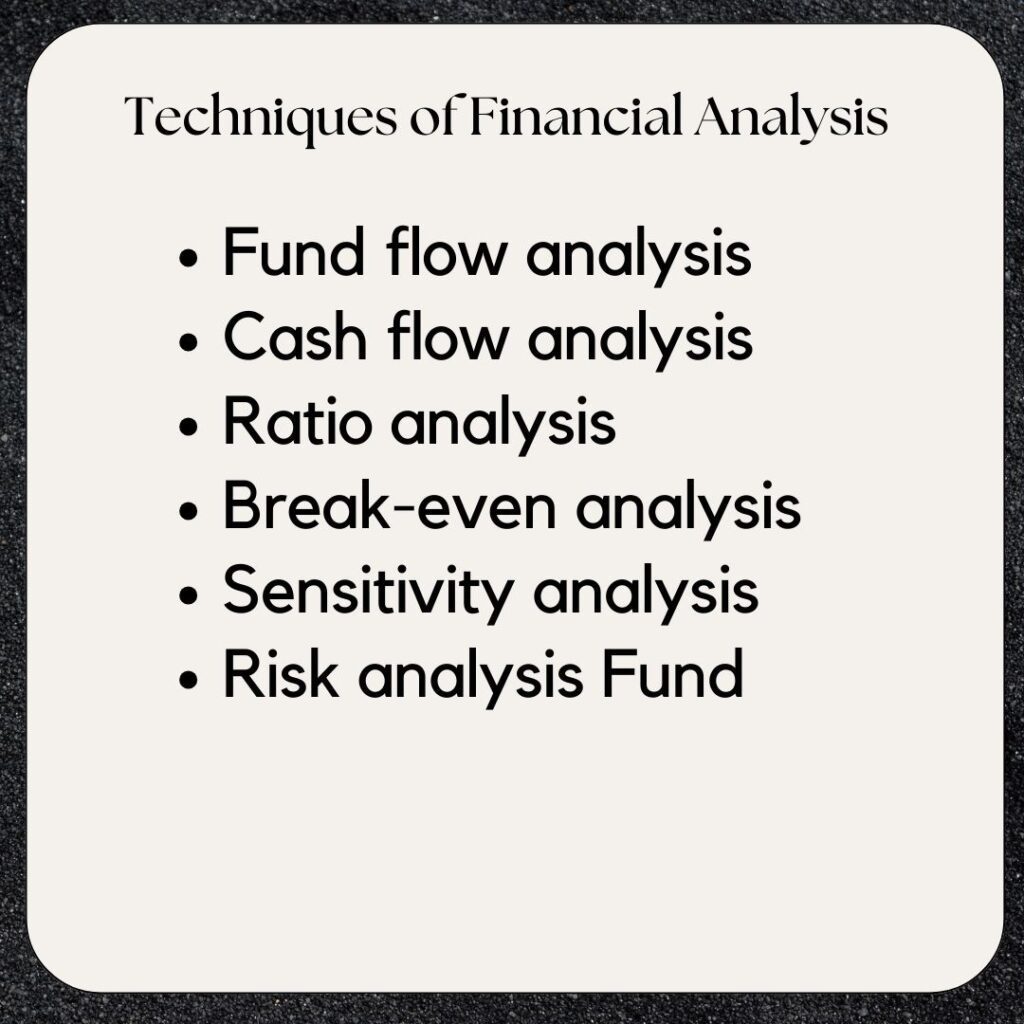Introduction
Is your business idea brilliant, but you’re unsure if it can turn a profit? The Financial Feasibility Analysis of the business is an important element of its success. Before entering into a project, one needs to evaluate to identify if it can handle the bills or not have set goals in mind. Such analysis shows the current financial situation of the business, allowing a business to make prudent decisions on such factors as investments, allocation of resources, and risk constraints. It’s essentially a roadmap that assesses the financial viability of a project, helping businesses make informed decisions before they invest time and resources.
Financial Feasibility or Financial Analysis
Once it becomes clear after initial feasibility tests that the project is sound, it becomes essential to determine the project’s finance requirements. Identifying the sources from which the finance can be procured is also required.
Meaning of Financial Feasibility or Financial Analysis

Financial analysis may be defined as the process of obtaining relevant information about a project to ascertain its financial viability.
Firstly, before going deep into the financial side, some other key steps need to be noted down.
- Estimation of total capital outlay (investment outlay) involved in the project;
- Estimation of operating costs; and
- Estimation of operating revenue(sales).
These estimates are used to prepare the proforma balance sheet, the proforma income statement, and the cash flow statement of the project. The purpose of financial analysis is to find out whether the project is attractive enough to secure funds needed for its various activities and whether the project will generate enough income to achieve its undertaken objective.
Financial analysis deals not only with the financial aspects of a project but also with operational aspects. To complete the financial analysis, it is also necessary to evaluate the operational strategy and investment strategy of the project.
The Break Even Analysis is used to explain the operational characteristics of a project. Financial strategy is evaluated in terms of financial leverage.
Investment strategy is evaluated in terms of investment criteria such as IRR, NPV, etc.(which will be discussed in the chapter Appraisal).
Here’s an example: Let’s say Sarah dreams of opening a bakery. Through FFA, she can estimate startup costs (rent, equipment, ingredients), operating expenses (salaries, utilities), and projected revenue based on market research. This analysis might reveal that Sarah’s dream location has high rent, or that the local market might not support her desired pricing. Armed with this knowledge, Sarah can adjust her plan (find a cheaper location, offer different products) or even pivot entirely.
Scope of Financial Feasibility Analysis

Financial feasibility analysis covers the following aspects:
Cost analysis
This is concerned with the estimation and evaluation of the expected cost of production. It covers the analysis of future costs, opportunity costs, incremental costs, imputed costs, interest costs, depreciation, taxes, etc. Cost analysis provides a relevant base for cost structure
Pricing
This is concerned with price determination strategy. The estimated price gives the expected demand for the product. So price should be determined judiciously. The price should be competitive as well. The price is determined considering relevant factors including the elasticity of demand.
Financing
Financial feasibility includes the determination of requirements of funds and the capital in sources of funds. It also includes the determination of ways to utilize the funds. After calculating the expected rate of return, it should be compared with the cost to make the optimum debt-equity mix. relating to the projects under consideration. This gives the entrepreneur an idea about
Income and expenditure
This is concerned with the estimation of income and expenditure relating to the projects under consideration. This gives the entrepreneur an idea about the cost of production and expected profit.
Capital budgeting
Capital budgeting is concerned with the allocation of funds among the available investment opportunities. Before allocating funds, it is necessary to estimate the cash inflows (benefits) and outflows (costs) of the projects. After determining cash flows the entrepreneur can find out whether it is profitable or not to invest funds in projects by applying certain appraisal criteria.
Techniques of Financial Analysis

After preparing the projected financial statements, the next step is to find out the economic facts about the project based on such projected financial data. This process is called financial analysis.
Financial analysis is a continuous process used to analyze the past and/or future financial position of a firm. In other words, it is used to interpret past and/ or projected financial data.
The main objective of the financial analysis is to decide whether the project carries with it sufficient merits to get funding and whether it will help in attaining needed benefits for the achievement of its goals.
Several techniques are available for financial analysis. Important techniques are:
- Fund flow analysis
- Cash flow analysis
- Ratio analysis
We can assess the operational strategy by using these methods:
- Break-even analysis
- Sensitivity analysis
- Risk analysis Fund
Let’s discuss the techniques used for financial analysis
Fund Flow Analysis
A balance sheet is only a snapshot picture of the financial position of a firm. Thus, it gives an idea about the financial standing at a particular point in time. Similarly, an income statement shows the operating result during that period. Thus, these statements are static.
They do not reveal the major financial transactions behind the balance sheet changes. They do not indicate the causes of change or the movement of funds between two periods. Hence, a fund flow statement is prepared to show the change in assets, liabilities, and net worth between two balance sheet dates.
The main goal of the report is to determine the money that has been collected and compare it with the way it has been spent. This will assist in minimizing the cost of finance and avoiding idle fund situations.
Cash Flow Analysis
Cash is a critical asset. They are ready to find out how much the funds were collected and how they were used for this cause.
Projects require capital to maintain their operations without any hindrance or delay. Thus, capital should be available all the time. Capital is necessary to buy fixed assets, and cash is essential to buy current assets or settle current debts.
A cash flow statement is prepared to ensure that the business unit will have the necessary cash with it and will not face liquidity problems. It demonstrates the flows of cash into and out of the firm and its final contribution to the firm’s cash account balance.
It represents flowing of funds into and out of the organization, calculated based on the development of its final effect on the cash balance of the company:
- Identify an amount of money that will be sufficient to launch the business.
- Plan for the timing of loan funds.
- If the estimated cash flows are recorded, it is required to consider ensuring the available cash is enough for settling obligations when due.
Ratio Analysis
In simple words, a ratio is a link between two numbers extracted from the financial report. Ratio analysis is one of the well-established methods employed to analyze the financial health of an organization. It is used to have an in-depth examination of the strengths and potential pitfalls of the organization.
Ratio analysis helps to compare current performance with the past and also in measuring the effectiveness and efficiency of the organization in the light of norms of performance. Ratio serves as a guiding force in analyzing the performance of an organization.
They help the management in the discharge of its key functions such as forecasting, planning, coordinating, controlling, and communicating.
We discuss the techniques used for financial analysis, Let’s move to discuss let’s discuss the operational strategy by using these methods.
Break-Even Analysis
The break-even analysis is a very traditional way most cost volume profit analysts apply. It can be interpreted in two ways-narrow sense and broad sense. Used in its narrow sense, it is concerned with the calculation of the break-even point. It is the point at which the project neither earns profit nor incurs loss.
At this point, the total costs equal the total sales. In other words, it is the point where losses don’t affect anymore and the profits. The break-even point is the balance point where expenses, prices, and profits are combined. This is the level where a business neither makes a profit nor has a loss.
Indeed it is a b point- a point of no profit no loss. It is also called zero point costs. BEP is rightly described as a Bread Earning Point because it is at this point the project /concern starts earning its bread is a tool of financial analysis whereby the impact on profit position of the changes in the system of analysis that can be used to determine the probable profit at any level of activity. It (i.e., profit).
Once a unit crosses its BEP, it generates a surplus. In a broad sense, it refers to volume, price, costs, and mix that can be estimated definitely and accurately. Break-even analysis is a widely used tool to determine the estimated profit of a product.
Sensitivity Analysis
Several elements such as the prices of the raw material, the volume of sale, the sale price, the degree of capacity utilisation, and so on are being studied through this process of sensitivity analysis which helps to understand their effect on the. economic viability of an enterprise. systematic Under this approach the value of different key variables is changed in a manner.
In other words, change is effected in one variable and the values of other variables are assumed constant and the results are analyzed to find out the sensitivity of various variables concerning their impact on profit margin.
For example, if it is felt that the cost of raw materials may go up by 10% without any increase in the sale price, separate profitability estimates should be prepared with a 10% increase in the cost of raw materials to find out whether the project will be viable even after the increase in the cost of raw materials.
Risk Analysis
Risk analysis is done to find out sources of the risks such as increases in the price of raw material, taxes and duties, and a product price that may lead to a large influence on the future returns for the project. On the other side, risk analysis gives a chance to the investor to bring amendments to the embarked strategy.
Types of Financial Feasibility Analysis

- Real Estate: This analysis will be done analyzing the factors including land acquisition costs, construction expenses, rental income estimates, occupancy rates, and property value appreciations.
- Business Ventures: These examinations would probably be aimed at startup costs, the range of operational expenditures (such as merchandising, salaries, and rents), forecasted sales, profits, and break-even points.
- New Product Launches: This may include studying the development costs, production expenses, and marketing budgets, estimating demand size, setting up a pricing strategy, and conducting competitor analysis.
Benefits of financial feasibility analysis

- Improved Decision Making: Through the exam of costs, risks, and potential yields the organizations can make reasonable decisions which can be Black and white about the investments as well as resource allocation.
- Risk Mitigation: Preventing the danger that occurs through the future analysis of finances helps in making progressive risk management methods and compulsory plans.
- Securing Funding: The important financial metrics are critical analysis for convincing potential investors or borrowers of the project’s profitability and ability to produce a return on their investment.
Challenges of Financial Feasibility Analysis

- Limitations of Forecasts: Uncertainty is an essential part of the forecast, resulting in various factors that influence the cycles of population. Determines like market volatility, econ clients, or competition movements can influence financial projections.
- Data Uncertainty: The accuracy of the summary is linearly dependent on the accuracy of the analysis, which in turn depends on the quality and completeness of the data. There is a lot to be considered; including market research, predecessor’s financial game, and economic news.
- Contingency Planning: Unpredictable events that may cause the upsetting of the completed financial plans just as they seem to be the best. An effective analysis takes into account the possibility of risks and comes up with contingency plans so that it responds to the in-defined events or situations.
Financial feasibility analysis for different industries:

- Healthcare: This type of assessment might consider aspects like the cost of the equipment, staffing levels, insurance payouts, patient numbers projections, and new rules to be required.
- Technology: In this section, the major part of research would be directed towards the investigation of R&D funds, technical infrastructure and tools, software licenses, market adoption of new technologies as well as competitors of technology products.
- Non-Profit: Even though they are not purely profit-driven organizations, non-profits also have to show a bit of financial strength. The analysis will possibly show or reveal the projection of fundraisers’ success, grant revenues, program costs, and also the allocation of volunteer resources.
Financial tools and resources:

- Financial Modeling Software: The spreadsheets of Excel and the dedicated software such as QuickBooks, or FreshBooks, can enable businesses to generate budgets and cash flow projections.
- Financial Ratio Analysis: Ratios include profit margin, debt-equity ratio, and return on investment (ROI), all of which are computed with the financial statements to evaluate the company’s financial health as a whole.
- Financial Feasibility Templates: Often the web is accessed because there are already templates to simplify and help in the financial feasibility process.
Financial feasibility analysis for small businesses:

- Start with the Basics: Concentrate on the essential expenses, which include rent, stock inventory, payroll, advertising, and the cost of income.
- Use Industry Benchmarks: Analyze your financial projections side by side with the average company in the industry to find out if any deviations could point to possible risks.
- Consider Break-Even Analysis: Compute a break-even point (when your business will start to incur profit) into account.
- Be Conservative with Forecasts: There is a greater chance of making mistakes if you estimate revenue moderately and overestimate expenses. You may not be realistic with your expectations.
- Seek Professional Guidance: As needed, you may wish to ask the financial advisor or accountant to assist you in this task to make sure that your analyzing documents are comprehensive and accurate.
Conclusion
Financial feasibility analysis is not done only a single time. As the situation changes and tasks develop, it should be paid attention to whether the analysis requires changes and updates. Financial feasibility analysis conducted in-depth with alternative plans minimizes the likelihood of uncertainties and ensures the long-term success of the ventures. It provides companies with a map of sorts to financial stability, leading them towards a bright tomorrow.
FAQ
What is financial feasibility analysis?
it is the process of evaluating a project or business idea to determine if it’s financially viable. It involves assessing the costs, risks, and potential profits to see if the project can generate enough income to cover its expenses and achieve its goals.
Why is financial feasibility analysis important?
it is important because it helps businesses make informed decisions about resource allocation, investment, and potential risks. By understanding the financial health of a project, businesses can avoid wasting time and money on ideas that are unlikely to succeed.
What are the benefits?
Improved decision-making, Risk mitigation, and Securing funding are the benefits of financial feasibility analysis











1 Review